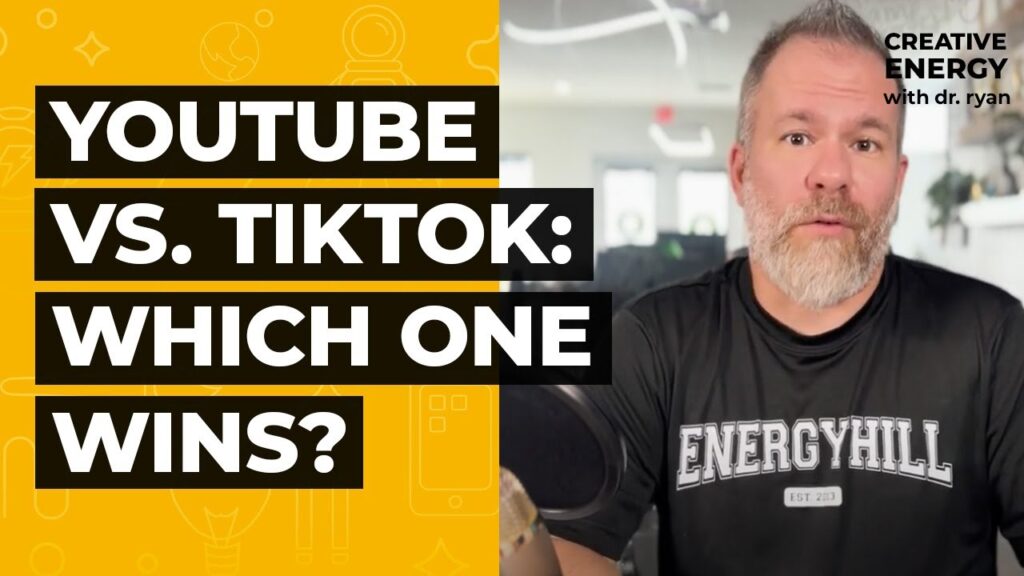
If you are creating an online marketing strategy for your business, chances are you have explored both YouTube and TikTok. There are pros and cons to using both platforms, and there are distinct differences in the content being published on each site. In creating a marketing strategy, business owners should research how to successfully use each platform to its full capability. But when you put them against each other, YouTube vs TikTok, which one would win?
YouTube all but started the online social media revolution. People have been publishing videos on YouTube for decades now. In more recent years, YouTube developed its own streaming content, which has been incredibly successful with 2.1 billion monthly active users and is increasing every day.
YouTube’s analytics deliver search results that directly match the searcher’s query. For example, if you were looking for a video about “How to fix a leaky faucet” you are going to see videos with 1.) titles that closely or exactly match your searched phrase, and 2.) videos with the longest “watch time”, or the average length of time users watch the video. This allows you to get quick access to the most engaging content that effectively meets your needs.
YouTube Kids is an entirely kid-safe version of YouTube that features episodes of kid’s television shows, clips of classic and contemporary kids' songs, education-focused clips from sources like Khan Academy and PBS Kids, and regulated user-created content. This platform can give parents peace of mind to let their kids explore and enjoy content created by and for kids.
Despite developing more kid-friendly content, YouTube’s demographic is typically older than other social media and content-sharing sites. Their largest viewer demographic is people ages 25 to 34, who make up about 21% of YouTube’s total ad audience. Additionally, almost 20% of YouTube’s viewers are 55 and older. Engaging older adults online is a difficult task, so it’s essential to know where they are spending their time.
Digital censorship is not specific to YouTube, but since the platform is owned by Google, some content creators are being “demonetized” for reasons they deem unfair. It’s the classic argument of freedom of expression vs. private companies dictating the content they publish. Some find it difficult to navigate, but it’s important to understand publishing terms and conditions before investing your time in creating content.
In an effort to keep up with Instagram Reels and TikTok, YouTube launched Shorts in 2020. These short videos are limited to 60 seconds, however, Instagram Reels and TikToks can last 2-3 minutes.
Tiktok was launched in 2016 to revolutionary fanfare. In 2022, TikTok was the 2nd most downloaded app in the entire world, second only to Instagram. Now, TikTok has over 1.677 billion users globally, of which 150 million are from The United States.
There is no content creation site that has captured Gen Z’s attention like TikTok. Historically, the 18–24 age demographic has been difficult to engage. In fact, 1 in 4 TikTok users are under 20 years old and the majority of TikTok creators are aged 18 to 24. So understanding TikTok is essential to engaging younger audiences.
TikTok’s predecessor, Vine, revolutionized short-form content. Vines had a 7-second limit, which made it a unique challenging to create content that was engaging enough to go viral. But Vine walked so TikTok could run: content published on TikTok can last up to 3 minutes, although content published by accounts with over 25,000 views averaged about 42 seconds.
Even though the public seems to love TikTok, governments around the world are not fans of the platform. All over the globe, there are concerns that TikTok, which is owned by the Chinese company ByteDance, could give the Chinese government access to sensitive user data.
Last year, President Joe Biden signed into law the No TikTok on Government Devices Act. Pretty self-explanatory, but this act prohibits downloading TikTok on any government digital devices for fear of security breaches. While TikTok could be a great help in marketing your business, these security concerns, as well as the global government’s disdain for the app, are something to keep in mind.
Overall, there are pros and cons to using both YouTube and TikTok. Each platform has specific content creation parameters, monetization tools for content creators, and analytic tools.
When it comes to successfully marketing your business, one platform might work better for your specific needs than the other. Do your research, gain an in-depth understanding of your target audience, and spend your time online effectively and wisely.
For more information about YouTube vs TikTok and how to utilize each platform, check out this livestream on YouTube hosted by our CEO and Co-Founder, Dr. Ryan Lowe.
Keeping up with the latest online trends is a tricky business. Instead, rely on design and marketing experts who can save you time, money, and effort. Contact us to learn how our award-winning marketing and design team can help your business grow.
"*" indicates required fields